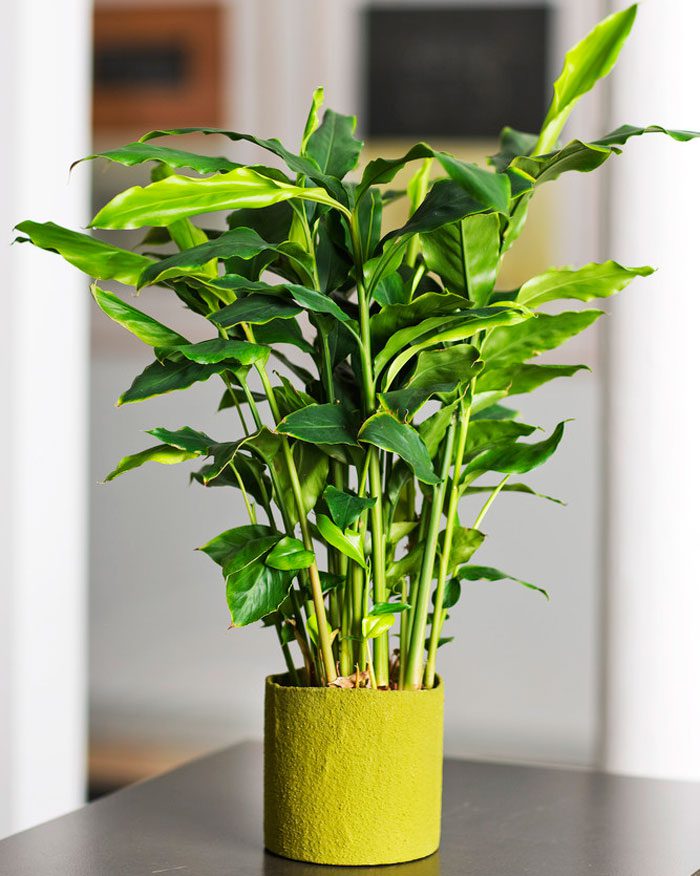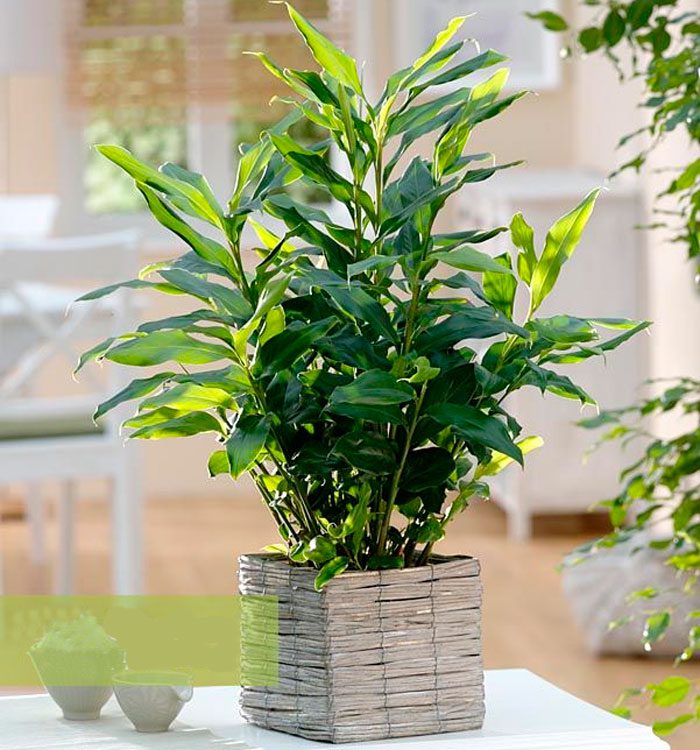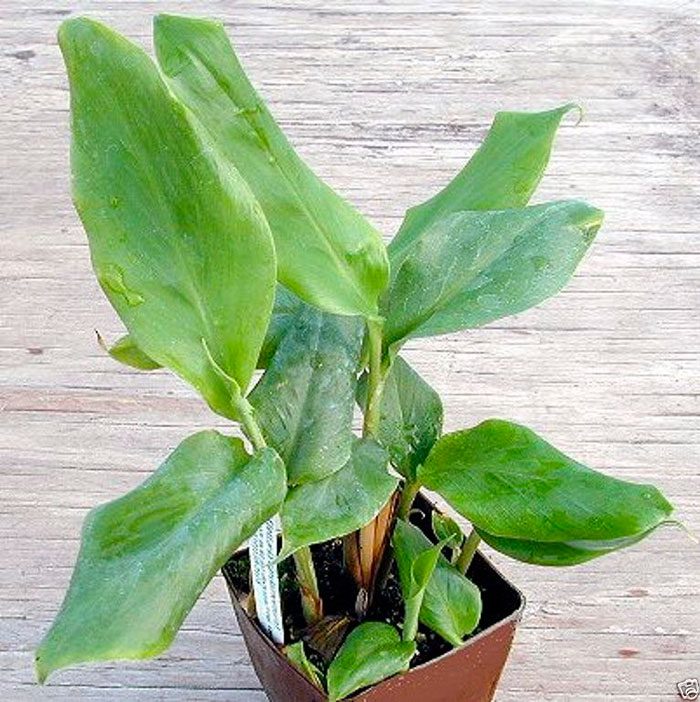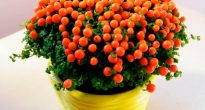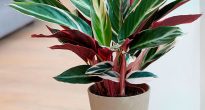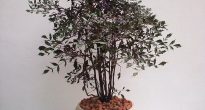A herbaceous plant such as Elettaria, which is a perennial, belongs to the ginger family (Zingibiraceae). It comes from the tropical regions of Southeast Asia.
At the moment, there is only 1 species in this genus - eletaria cardamomum (Elettaria cardamomum), also called cardamom.
Elettaria cardamomum - This evergreen plant is a perennial. It has fleshy roots, as well as 2 types of shoots - 1 false, it stretches up and there are leaves on it. Dark green, alternately arranged leaves, lanceolate-linear, have thin long petioles. The leaves reach 60 centimeters in length and 8 centimeters in width, and if you knead them with your fingers, you can feel a tart, rather strong smell. The 2nd creeping stem is real. It has no foliage. Flowers grow on it, which are collected in racemose inflorescences. Small flowers have an unusual color. So, one of the petals is colored white and has a purple pattern located in the middle, and the others are light green. When flowering ends, fruits are formed, represented by three-nested capsules, which are 2 centimeters long. Fragrant ribbed seeds are colored black.
Content
Home care for cardamom
Illumination
Such a plant just needs bright lighting, but it should be borne in mind that it should be diffused. In the summer, the flower must be shaded well from the direct scorching rays of the sun. It is worth remembering that cardamom also needs good lighting in winter, as in summer.
Temperature regime
Such a plant loves warmth very much. So, in the warm season, it grows normally and develops at an air temperature of 20 to 25 degrees. In winter, this flower has a dormant period. For this period, it must be transferred to a cool place (from 12 to 15 degrees).
Humidity
Cardamom reacts very positively to regular foliage hydration from a sprayer. It is also recommended to systematically arrange a shower, or the accumulated dirt on the surface of the leaves can be removed with a slightly damp sponge.
How to water
In the summer, watered regularly, while the soil should be evenly moistened. Avoid stagnant liquid in the substrate. In winter, watering should be very sparse, but complete drying of the earthen coma should not be allowed.
Top dressing
Top dressing is carried out in the spring and summer once every 2-3 weeks. For this, fertilizer for vegetable crops is used.
Transplant features
Differs in rapid growth, in this regard, it is necessary to transplant once a year. To prepare the soil mixture, combine humus and sod soil, as well as sand in a 2: 2: 1 ratio. Purchased soil is suitable for ornamental deciduous plants. The pot should be low and wide. Make a good drainage layer at the bottom.
Reproduction methods
It can be propagated by dividing the rhizome, seeds and apical cuttings.
It is necessary to divide the rhizome during transplantation. At the same time, there should be at least 2 buds and 2 growing roots on each division. Sections are sprinkled with crushed activated carbon, and then the cuttings are immediately planted in the soil mixture.
To root the apical cuttings, maintain a constant temperature of 20-25 degrees.
The depth of planting seeds during sowing is equal to the width of the seed multiplied by 2. Sprinkle them with a substrate on top, watered a little, and the container itself is covered with film or glass. The required temperature is from 25 to 28 degrees. The chosen location should be well lit.
Pests and diseases
Spider mite, shield... Viral infections.

